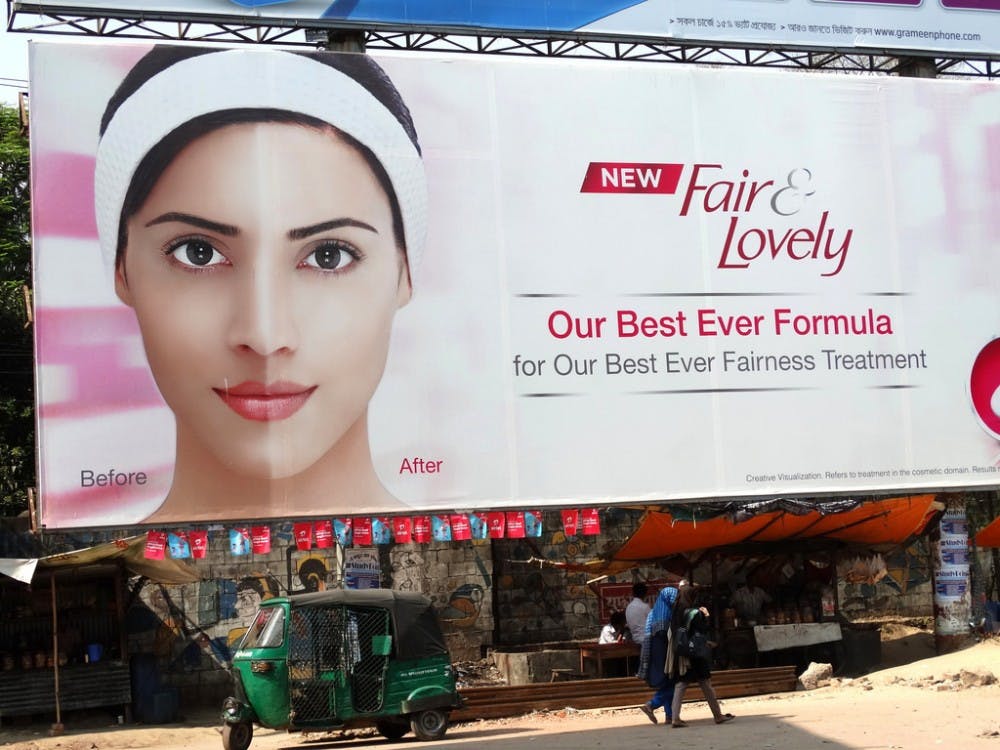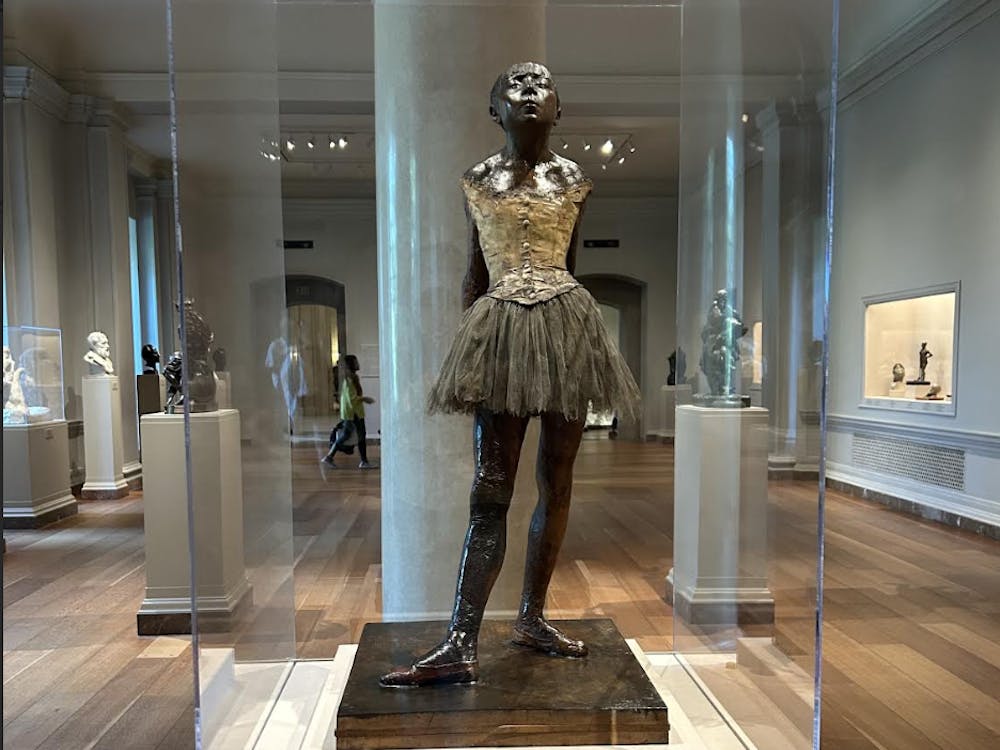
Growing up, my family visited China twice a year. If you have ever turned on a television in China, then you’re most likely familiar with the skin care commercials: Glowing women with pearl-like complexions, basking in the whitening magic of Olay.
As a child with an elementary comprehension of the Mandarin language, however, I did not interpret the splashes of ivory elixir across the screen as cosmetic; for the longest time, I thought these advertisements were for milk.
In retrospect, the majority of the Chinese population is lactose intolerant — not exactly the target market for dairy. In my defense however, I was a child. And although children are not “colorblind,” at the time the concept of whiteness was too abstract for me to comprehend.
Chinese culture favors light skin for two reasons.
The first, more traditional reason is that dark skin is typically associated with peasants, tanning being the natural consequence of laboring beneath the bombardment of UV rays. Thus, pale skin was seen as a characteristic of the upper class.
The second, newer but not new reason is the pervasiveness of Western beauty standards. A complex consequence of colonization and globalization, we live in a world where the universal standard of beauty is white.
White beauty standards transcend complexion: Double eyelids. High-bridged noses. Delicate bone structure.
Look at Chinese soap opera actresses, the upper echelon of beautiful women in Chinese society: The Chinese women that are considered the most beautiful are the women who look the least Chinese.
Throughout my adolescence, various insecurities took turns dominating my inferiority complex. Of course, the normal teenage girl woes made their rounds: I was not pretty enough. Not skinny enough. Not popular enough. Not smart enough.
But above all, I was not white enough — this is what troubled me the most.
Do you remember the first time you looked in the mirror and didn’t like what you saw? Personally, I cannot tell you when and why I began to internalize that being Asian meant I was not just ugly but inferior.
Was it failing to garner attention from slimy middle-school boys? Noticing that all of the “popular” girls were white? Consuming media that only featured white actresses? In short, it was a process, an experience that is not unique to my adolescence but a phenomenon familiar to people of color who grew up in majority-white environments.
Even after my mid-high school glow-up, my inferiority complex persisted. I constantly daydreamed about how much better my life would be if I was white. Even though I began receiving (very limited) attention from still-slimy, now high-school boys, their interest was always expressed by something along the lines of: “You’re attractive — for being Asian.”
I suppose they intended for this to be a compliment, not a microaggression. I suppose I should have felt flattered, honored to be distinguished as a rare exception among a universally unattractive race.
May I remind you that I am half Chinese and half white. Even though my phenotypes clearly chose a side, I still look marginally whiter than most full-Asian individuals. In a world where whiteness is nearly synonymous with beauty, my marginal whiteness earned me the status of “attractive — for being Asian.” In other words, I was attractive because I didn’t look as Asian as most Asians.
Fast-forward a few years: Yes mom, it was mostly a phase. These days, my inferiority complex is dominated by career-angst and “I won’t get into law school” woes, and the student body diversity that the admissions office works oh so diligently to engineer certainly helps.
However, there are still days when, if given the opportunity to flip a switch and be white, I would do so in a heartbeat — and not just for aesthetic purposes.
White is not only the universal standard of beauty, but, in the United States, white is also the default.
Say you’re telling a story: If the race of an individual is not explicitly mentioned, most people assume that said individual is white, because white is normal.
The process of internalizing such implicit biases is long and drawn-out. Do you remember reaching for the “skin-colored” crayon in elementary school? Hoping for a Hello Kitty bandage instead of a boring, “skin-colored” one? Now, tell me, whose skin does “skin-colored” refer to?
“I don’t see color.” Yes you do, we all do, and that’s okay. Race may be a social construct, but it is inseparable from the lives of people of color. While individuals who are white only have to consciously consider race when it is explicitly brought up, individuals who are not white/white-passing have no choice but to think about race on a daily basis.
I am Asian every day. Consciously or subconsciously, it is the first thing you notice about me. And seeing color is neither racist nor wrong. As for invalidating and diminishing the lived experiences of people of color, that’s another story.





